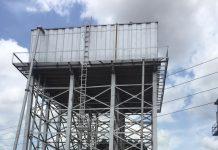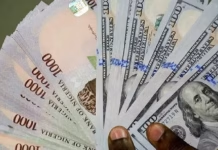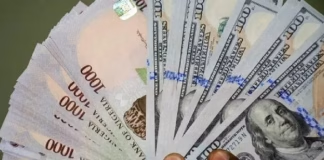Thirty days of martial law has taken effect in 10 of Ukraine’s 27 regions on Wednesday with President Petro Poroshenko saying it aims to prevent an all-out Russian invasion.
The measure that affects regions closest to Russia’s military bases – the first ever martial law in the country’s history – was approved by parliament on Monday, a day after a clash between Ukraine and Russian forces in the Sea of Azov.
But the largely symbolic legislation was activated on Wednesday morning after Andriy Parubiy, the chairman of Verkhovna Rada – the Ukrainian parliament signed it and published in the government newspaper Uryadovy Courier.
The Kremlin has condemned the development saying martial law will escalate the conflict that saw Moscow seize three Ukrainian ships and capture 24 crew members off the coast of the Russian-annexed Crimean peninsula.
A court in Crimea ordered 12 of the Ukrainian sailors to be held for two months, the TASS news agency reported on Tuesday.
Volodymyr Fesenko, Director of the Centre for Political Studies Penta, told Al Jazeera martial law was “for now more like a preventive measure”.
But in case of any “manifestations of the Russian aggression”, Ukraine would be able to respond militarily, he said.
“It will not affect the day-to-day life of ordinary people,” said Fesenko.
Why Now?
President Poroshenko, who critics allege initiated martial law to postpone Ukraine’s March 31 presidential elections, said on a local TV station on Tuesday that Kiev had to resort to it to save the country.
“Ukraine is facing a threat of a full-scale war with the Russian Federation,” he said.
Asked why Kiev did not impose martial law when Crimea was annexed by Moscow in 2015 and the Russian-backed rebels seized parts of Donetsk and Luhansk regions, Fesenko told Al Jazeera “it was hard to say”.
“At that time, the law enforcement agencies and majority of the government were simply disorganised and demoralised,” he said. “Also Ukraine’s international partners advised Kiev against it.”
Fesenko rejected the pro-Russian theory that Ukraine might have provoked the latest flare-up and exaggerated it with martial law to prevent the Russia-backed violence that killed more than 10,000 people in the country since 2014.
The Sea of Azov conflict on Sunday that saw Russia temporarily close the Kerch Strait came two months after Poroshenko announced the creation of a new naval base in the area between Crimea and Russia.
He made the move after two Ukrainian warships – the search and rescue ship A500 Donbas and the seagoing tug A830 Korets – on September 23 passed through the strait for the first time without incident. The vessels used to be part of the country’s Black Sea fleet.
The country lost much of its navy after the annexation of Crimea when Russia seized Ukraine’s ships.
Economic Hit:
The developments of the last few days have affected the Ukrainian currency as markets reacted to the tension.
Hryvnia lost five percent of its value, but the situation is temporary, according to Pavlo Kukhta, Deputy Chairman of Strategic Advisory Group at the Cabinet of Ministers of Ukraine.
“It is typical for a situation like this. Psychological reactions happen when risks are higher, but it does not really affect the economy in a major way,” he told Al Jazeera.
Kukhta also said since Russia has already reopened the Kerch Strait for commercial shipments, the effect of the conflict is also expected to be limited in the Mariupol region’s port from where Ukraine exports one-quarter of its metals.
Ukraine’s economy suffered a major blow when it lost control over Crimea and parts of Luhansk and Donetsk as many industrial factories are based in the territory. But the country has weathered its worst days, according to Kukhta, with economic growth at an average European rate of 3.5 percent this year.















